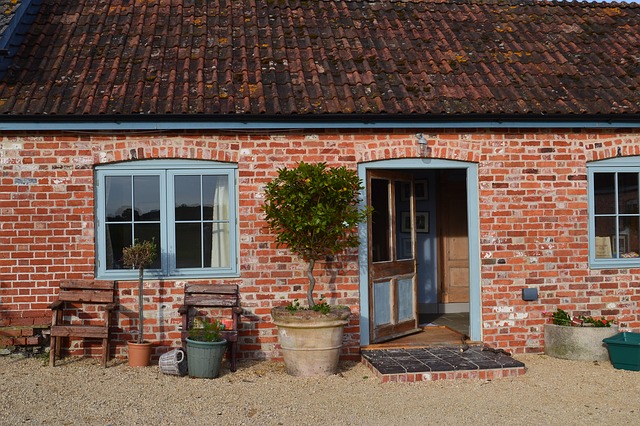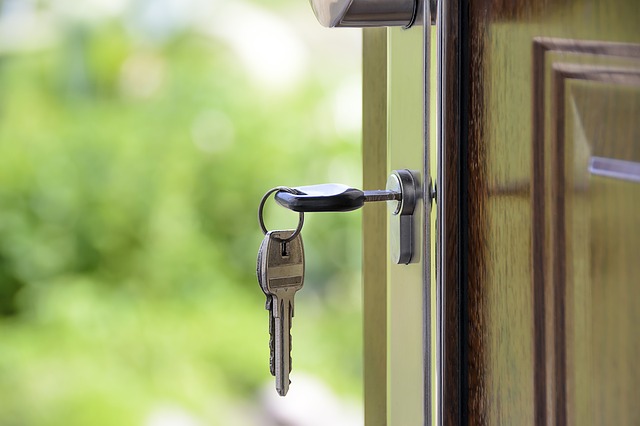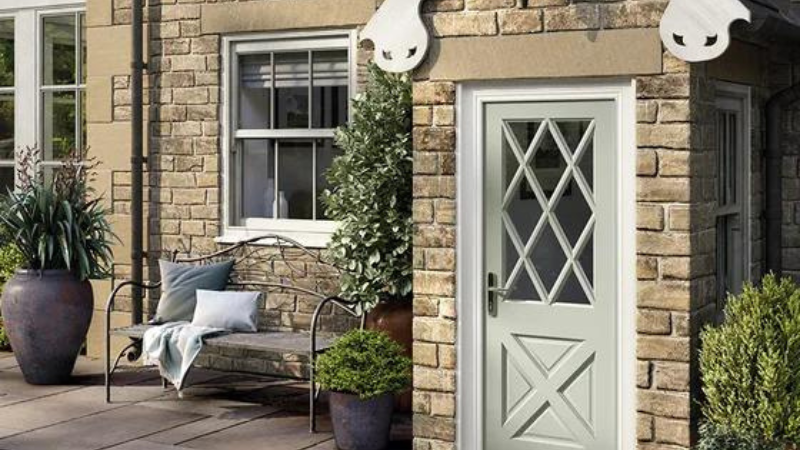Just about every building, almost by definition, will come with a front door of some sort. This is the primary point of entry to the interior, and it’s the first thing that new arrivals will see and use. This makes it incredibly important. To get the best from your front door, you’ll need to be sure that you look after it properly. Here, we’ll examine a few more common problems and how to fix them.
Front Door is Jammed
If your front door is sticking or otherwise hard to open, you’ll probably end up leaving the house slightly more irritated than usual. What’s worse, a door that’s slightly stuck is likely to become one that’s very stuck, if you allow the situation to persist.
Fortunately, even if the situation has gotten so bad that the front door won’t open from inside or outside, there are still things you can do. The usual cause is that the door is falling away from the hinge and rubbing against the lock side of the frame – we’ll look at what to do when your front door is sagging in a moment. But what do you do if the actual jamb has changed shape, thanks to a shift in the structure of the building over the years?
In the case of a timber door, this can be corrected by planning and sanding the edge with the lock on it. In the case of a UPVC door, we can adjust the hinges by opening the plastic covering on the hinges and using an Allen key to move the hinge in one direction or another. Be sure to test that the door is closing and opening properly every time you make an adjustment, however minor.
Front Door is Warped

One of the downsides of solid timber is that it’s made from natural fibres, which expand and contract in response to changes in the natural environment. Moisture, temperature and air pressure will all cause a slight shift in shape. Over time, these slight shifts can add up to a sizeable shift, which causes the entire door to change shape such that the side catches against the edges of the frame.
So how do you fix a warped door? Well, if your door is so warped that it is catching against the frame, then the only remedy is to sand it down. Make a note of where the edges are catching, and sand them back so that you have a straight edge again. You’ll be using coarse sandpaper, and then finishing with the finer stuff. Ensure that the surface is clean and dry before re-finishing the affected area so that it matches the rest of the door.
Note that non-timber substances like uPVC do not warp in this way, and should never be sanded. If you try it, you’ll almost certainly ruin the door.
Front Door is Sagging
As we’ve mentioned, among the most common causes of front door problems is a door that sags away from the hinge side, usually because the weight of the door has gradually pulled loose the screws over a period of several years.
To fix this, we can force open the door and tighten the hinges. In many cases, the screws that hold the door in place will have worked their way loose over time. If the screws are no longer biting into the surrounding wood, then it might be time to remove the door entirely and create a fresh surface using wood filler. On the other hand, you might use longer screws; these will form a more solid grip of the wood, and ensure that the door is held securely in place for the foreseeable future.
Front Door is Not Sealing
The seals around a front door are what’s known as ‘compression’ seals. These are long, hollow tubes of flexible plastic, which deform to create a seal around the door when it closes. This prevents air from circulating from one side of a door to the other.
However, seals of this sort can only be squashed so many times before they begin to lose their elasticity. When this happens, you’ll want to replace them, as failing to do so will allow warm air to escape from your home, meaning that you’ll have to pay more on your heating bills, and that you’ll suffer cold draughts during winter. Seals can usually be installed with ease. They come in standard sizes, and are designed to slot into special holes around the edge of your door.
If the seals are new, and they spring back firmly when you squash them with your fingers, then the fault might lie with a misalignment of the door itself. It it’s not coming close enough to the edge of the door, then the door won’t properly seal, however new the seals are. You can deal with this by adjusting the hinges so that the door sits closer to the centre of the aperture.
What if my Front Door is Hard to Lock?

It might be that your door opens and closes with reasonable ease, but that problems arise when you go to lock it. If you have a euro-style lock, then replacing it is a simple matter of pulling the existing one out and putting a new one in. In the case of a front door lock, it’s recommended that you use something appropriately robust. Look for a kite mark and three stars above the keyhole. This indicates that the lock has met the TS007 standard, and is resistant to ‘lock snapping’ (the practice of pulling off the front of the lock with a spanner and releasing the catch manually.
In the case of deadbolt-operated timber doors, you might find that the problem is an ingress of expanding wood into the strike plate. Often, however, you might be able to correct the problem by simply squirting a generous helping of WD40 into the mechanism!
In Conclusion
If your front door is to be kept secure and presentable, you’ll need to do everything possible to keep it in good condition. That means pro-actively tackling the problems we’ve looked at, so that they don’t have a chance to worsen. In most cases, this is something you can take care of yourself!





